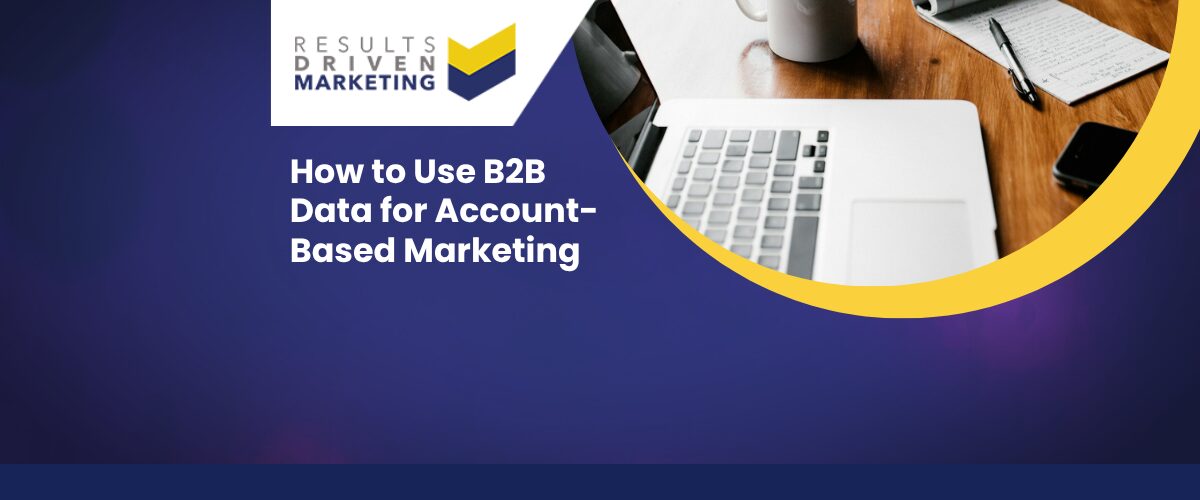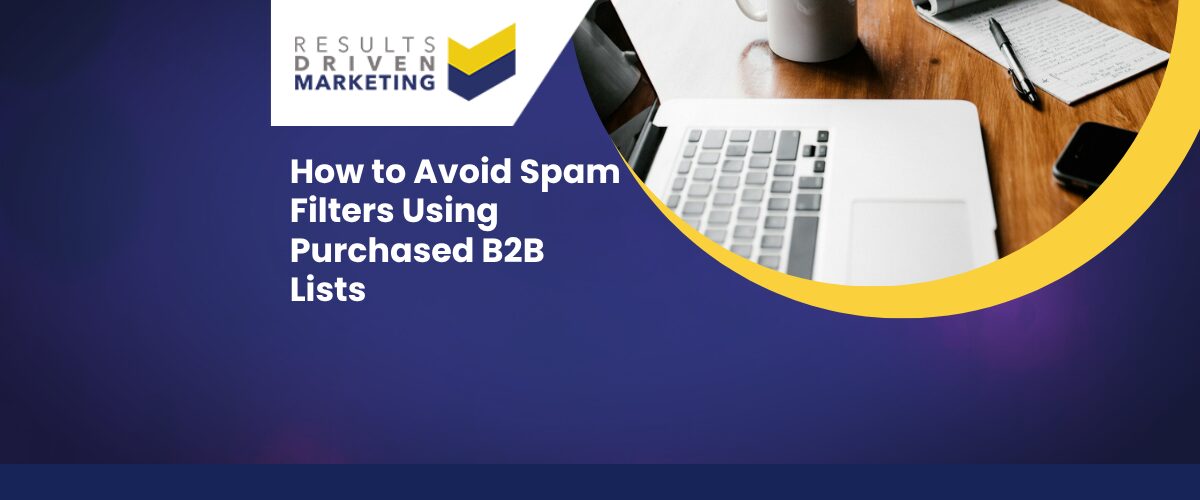
How to Use B2B Data for Account-Based Marketing
How to use B2B data for account-based marketing is a key question for SMEs looking to move beyond spray-and-pray campaigns. If you’re relying on purchased data but treating every contact the same, you’re missing the real value B2B data can bring to strategic outreach.
Account-Based Marketing (ABM) is about focusing on a shortlist of high-value companies, identifying the right decision-makers, and tailoring your message to their specific challenges. But to do that well, you need clean, structured, and properly segmented B2B data.
Without it, you risk sending the wrong message to the wrong person—or worse, missing the right contact entirely.
This guide will show you how to build targeted account lists, enrich them with the right contact details, and create highly personalised campaigns that improve engagement, shorten sales cycles, and boost ROI. Whether you’re just exploring ABM or ready to scale it up, you’ll find practical steps to help you do it right.
Table of contents:
What Is ABM and Why Quality Data Matters
Account-Based Marketing (ABM) is a strategic approach that flips the traditional funnel. Instead of casting a wide net and hoping for leads, ABM starts by identifying specific companies you want to work with—and then builds marketing around them.
For SMEs, this focused approach saves time and resources by concentrating only on high-value accounts with the greatest potential for conversion.
The Role of B2B Data in ABM
To run ABM effectively, you need more than just company names. You need:
-
Accurate contact information for decision-makers
-
Firmographics like company size, revenue, and sector
-
Insight into pain points, priorities, and even technologies used
Without this data, you’re guessing. With it, you’re targeting with purpose.
Whether you’re contacting an MD, Sales Director, or Marketing Lead, good data ensures your message gets to the right person—and resonates.
Step-by-Step: Using B2B Data for ABM
Step 1 – Identify Target Accounts
Start by selecting companies that match your ideal customer profile. This might include:
-
Sector – e.g. manufacturing, professional services, tech
-
Company size – headcount or turnover
-
Location – UK regions or cities you serve
-
Growth stage – scaling SMEs or established mid-market firms
Use B2B data to filter and shortlist companies that are a genuine fit for your product or service.
Step 2 – Map Decision-Makers in Each Account
Once you’ve identified the target companies, the next step is to find the right people within them. Typically:
-
Managing Directors
-
Heads of Sales or Marketing
-
Operations or Finance leads (depending on your offer)
Good data gives you job titles, contact details, and hierarchy—so you can speak to the person with the authority to act.
Step 3 – Enrich Account Profiles
Layer in additional information to better tailor your outreach:
-
Number of employees
-
Turnover brackets
-
Tech stack or industry certifications (where available)
-
Previous campaign engagement (if applicable)
This makes your messaging sharper and more relevant.
Step 4 – Personalise Outreach by Account
Generic messaging doesn’t cut it in ABM. With enriched data, you can:
-
Reference company-specific challenges
-
Personalise subject lines or offers
-
Align messaging to industry trends or role responsibilities
You can also tailor the channel—email, phone, or even direct mail—to match the recipient’s preferences and role.
Step 5 – Monitor Engagement & Optimise
Track how each account responds:
-
Who opened the email?
-
Who clicked or replied?
-
Which content got the most attention?
This helps you refine your approach and focus efforts on warm accounts showing buying signals.
Common Mistakes in ABM Without Data
Even well-intentioned ABM campaigns can fall flat without the right data behind them. Here are some of the most common missteps SMEs make:
Broad Targeting Disguised as ABM
-
Targeting an entire sector or region and calling it ABM misses the point.
-
True ABM is selective—focused on specific accounts, not broad audiences.
Missing Decision-Makers
-
Many campaigns target the wrong level of contact or rely on generic addresses.
-
Without job title data, you waste effort on gatekeepers or irrelevant roles.
Generic Messaging
-
Sending the same email to every company doesn’t feel personalised—because it isn’t.
-
Lack of insight into the account’s size, industry, or challenges leads to messages that fall flat.
No Account-Level Tracking
-
Without account-by-account engagement insights, you can’t see which companies are warming up or going cold.
-
This makes it harder for sales and marketing to align and follow up effectively.
Avoiding these pitfalls starts with using high-quality B2B data as the foundation for every stage of your ABM strategy.
Why Choose Results Driven Marketing
If you’re serious about using ABM to grow your sales pipeline, the quality of your data is just as important as your messaging. At Results Driven Marketing, we support SMEs across the UK with the tools and advice needed to run focused, high-converting campaigns.
Here’s how we help your ABM strategy succeed:
-
Clean, Targeted B2B Data
We provide accurate, segmented email lists tailored by job title, company size, sector, and region—ideal for ABM campaigns. -
Decision-Maker Focus
Our data includes named contacts with relevant roles, so you’re not guessing who to target within an account. -
CTPS-Checked and GDPR-Aligned
All data is sourced responsibly and compliant with GDPR, helping you avoid risk and protect your brand. -
Practical Support for SMEs
Whether you’re just starting with ABM or refining your strategy, we offer real-world advice based on what actually works in UK markets.
If you want to personalise your outreach and convert more key accounts, we’re here to help. Contact us for a chat or to request a tailored list.
Final Thoughts
How to use B2B data for account-based marketing isn’t just about building lists—it’s about making smarter choices, crafting relevant messages, and focusing your sales effort where it matters most.
With clean, segmented data, you can:
-
Identify the right accounts
-
Reach real decision-makers
-
Personalise campaigns that actually get noticed
-
Track what’s working, and improve over time
At Results Driven Marketing, we help UK SMEs move from generic cold outreach to smarter, more strategic engagement. Whether you need help building your first target account list or want advice on how to boost your ABM results, we’re here to support you.
Explore our email lists tailored to your campaign goals, or contact us today for a free, friendly conversation.
Results Driven Marketing
Helping UK SMEs go from bad data to more customers and profits.
📞 0191 406 6399
📍 Cobalt Business Exchange, Newcastle
🌐 rdmarketing.co.uk




